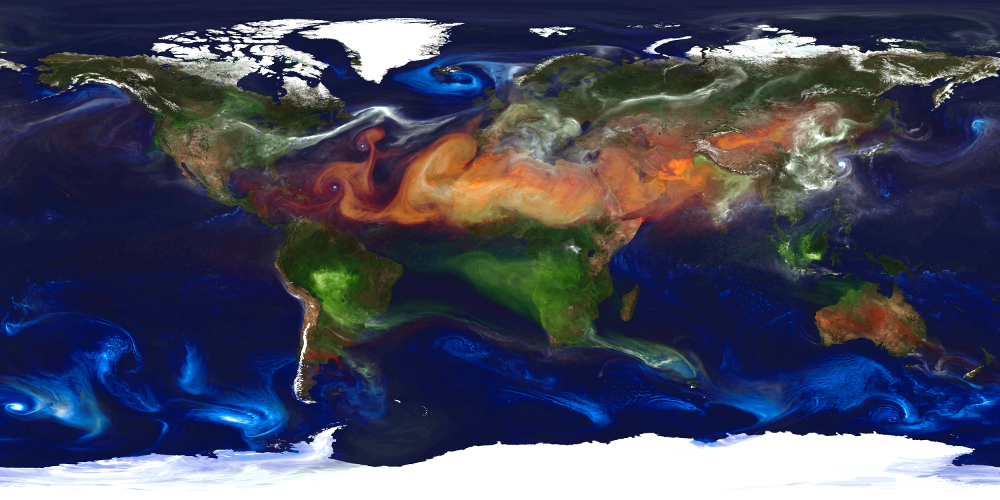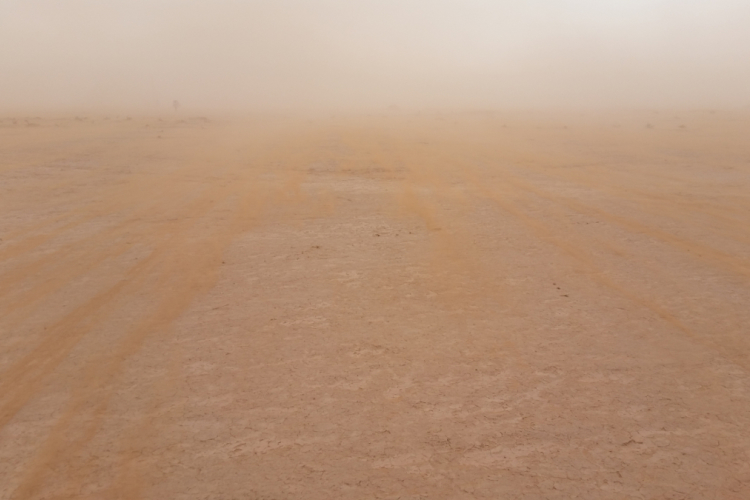New Helmholtz Young Investigator Group on mineral dust at IMKTRO

Mineral dust (red), sea salt (blue), smoke (green), and sulfate particles (white).
Image credit: William Putman, NASA/Goddard
(https://www.nasa.gov/multimedia/imagegallery/image_feature_2393.html)
Aerosols and clouds contribute the largest uncertainty to estimates of the Earth’s energy budget. Mineral soil dust is the dominant contributor to the global aerosol mass. Dust has severe impacts on climate, air quality, transportation, health, economy, and solar-power generation in many areas of the world, including Europe. The particle-size distribution, shape, and composition of dust aerosol mainly determine its climate impact. Recent observations show that dust particles much larger than previously thought are transported over long distances. Numerical models are currently unable to reproduce the transport, neither the emission, of such giant particles.
A new research group at IMKTRO aims to investigate the emission of mineral dust particles, in particular of the large ones, and their impact on cloud formation with the goal to reduce the corresponding uncertainties. The Helmholtz Young Investigator Group with the title “A big unknown in the climate impact of atmospheric aerosol: Mineral soil dust” is led by Dr. Martina Klose and is funded for 6 years with a total of 1.8 million Euro.

Copyright: Martina Klose
Mineral dust emission strongly depends on the properties of the land-surface, of the individual particles, and the near-surface winds, which makes its prediction with numerical models difficult. To advance existing models and to facilitate accurate dust predictions, the group plans to investigate the dust emission process using theoretical concepts, field measurements, and numerical modeling. Especially the field measurements will be conducted in collaboration with international partners.
Airborne dust particles can act as efficient ice nuclei and can thereby affect cloud formation. The particles’ properties, not least their size, again play an important role and determine their efficacy to promote ice nucleation. In collaboration with scientists at IMKAAF, the new research group will conduct experiments to investigate the influence of dust on cloud formation with the goal to better represent the process in models and to better assess dust impacts on weather and climate.
Helmholtz Young Investigator Groups are awarded by the Helmholtz Association of German Research Centers through a competitive selection procedure. They allow internationally outstanding postdoctoral researchers to establish their own research groups and gain early scientific independence.
